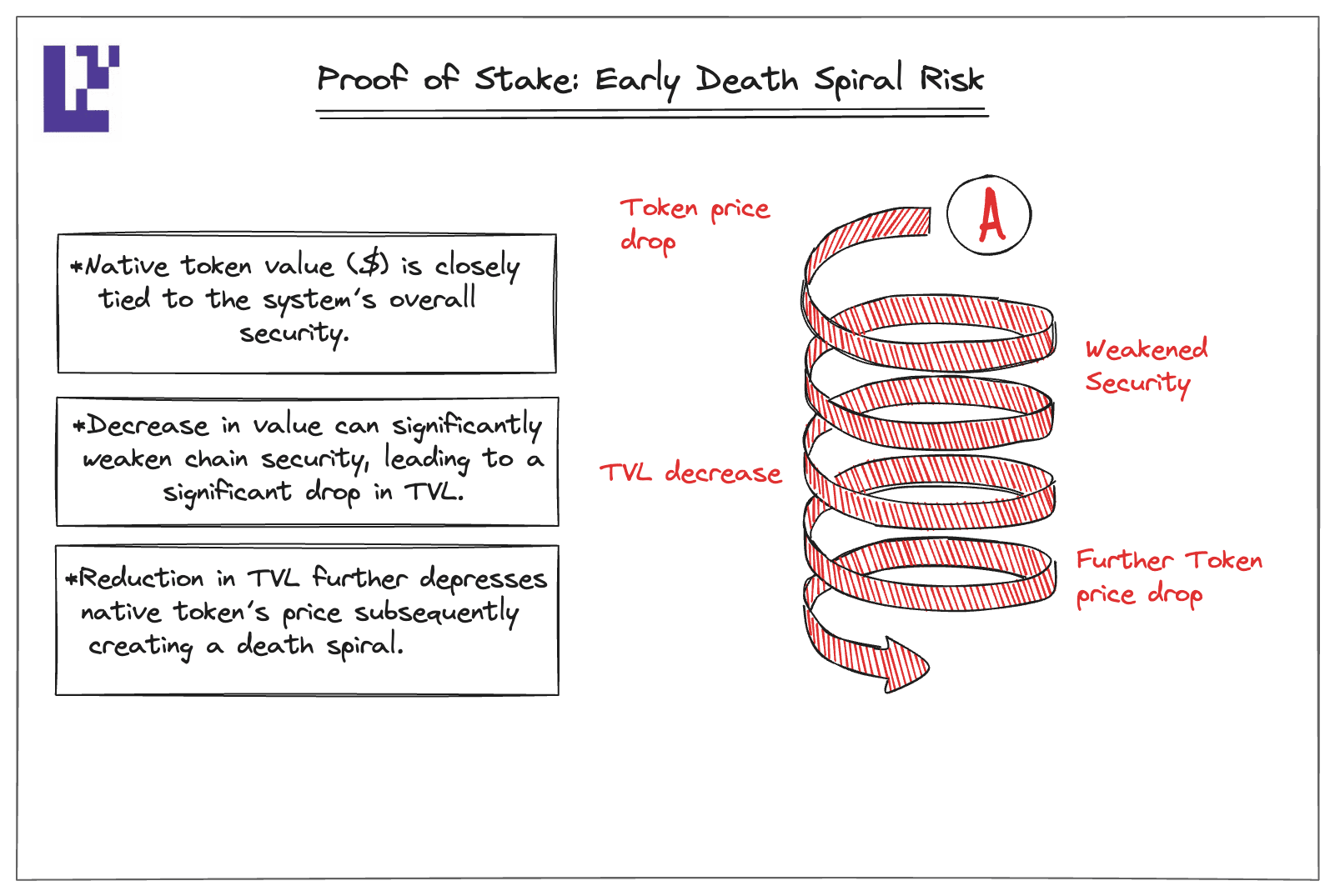Traditional Proof of Stake (PoS) networks often face a fatal challenge—the "death spiral" phenomenon. When the value of network tokens falls, it undermines the security of the entire network, leading to a decrease in total locked value (TVL), which in turn further depresses token prices, creating a vicious cycle.

To address this industry pain point, Chainbase innovatively introduced the dual-staking mechanism, with the core idea of using two different types of tokens to protect the same PoS network. One can be an external network token with low volatility, deep liquidity, and easier accessibility, such as Ethereum (ETH), while the other is the network's native token, used to capture network value.
The advantages of this dual-staking model are evident. By introducing relatively stable external assets like ETH as staking collateral, Chainbase effectively reduces systemic risk arising from the price volatility of a single token. At the same time, the existence of the native token ensures the effective capture of network value and the normal operation of the incentive mechanism.
In terms of specific implementation plans, Chainbase adopts a native dual-staking model. This model is similar to a grid security mechanism, treating two groups of operators as a whole, where each operator's stake is based on external oracles converted into a unified unit, and users subsequently verify responses based on the legal number of participants in the group. This design not only ensures the decentralized nature of the system but also guarantees a fair price conversion between LST (Liquid Staking Token) and the native token C through the oracle.
From a technical architecture perspective, Chainbase's dual-staking system supports staking of LST and the native token. For the LST part, stakers first stake to the operator, and then the operator registers to AVS (Active Verification Service). Offline relays are responsible for monitoring and synchronizing the staking and delegation information of AVS operators. For the native token C part, stakers issue staking events by interacting with the ERC20 staking contract, while the relays monitor these events and synchronize information with the Cosmos part.
The cleverness of this architectural design lies in its full utilization of the maturity and liquidity of the Ethereum ecosystem while maintaining the independence and value capture capability of its own network. By supporting multiple LST tokens, Chainbase provides users with more choices, lowers the participation threshold, and enhances the security of the entire network.
It is worth noting that the native dual-staking model chosen by Chainbase has obvious advantages over other schemes. Unlike the modular dual-staking that requires local operators and ETH-supported operators to respectively reach the legal number, the native model simplifies the operational process through a unified value measurement unit, improving system efficiency. At the same time, compared to the veto dual-staking model, the native model avoids complex veto mechanisms and reduces potential governance conflicts.
From an economic perspective, the dual-staking mechanism provides Chainbase with stronger risk resistance. Even in extreme market situations, the presence of external stable assets can provide basic security guarantees for the network, while the native token ensures the normal operation of network incentives and the rational distribution of value.
More importantly, this design concept reflects Chainbase's profound insight into the development trends of blockchain technology. In today's world of coexistence of multiple chains and increasing importance of interoperability, relying solely on a single token staking mechanism can no longer meet the needs of complex application scenarios. Through dual-staking, Chainbase not only enhances the security and stability of its own network but also explores a new path for sustainable development for the entire industry.
In summary, Chainbase's dual-staking mechanism, through clever design, successfully solves the death spiral problem faced by traditional PoS networks, providing an innovative solution for building a more secure, stable, and efficient blockchain infrastructure. The successful implementation of this mechanism will undoubtedly inject new vitality into the long-term healthy development of the blockchain industry.


